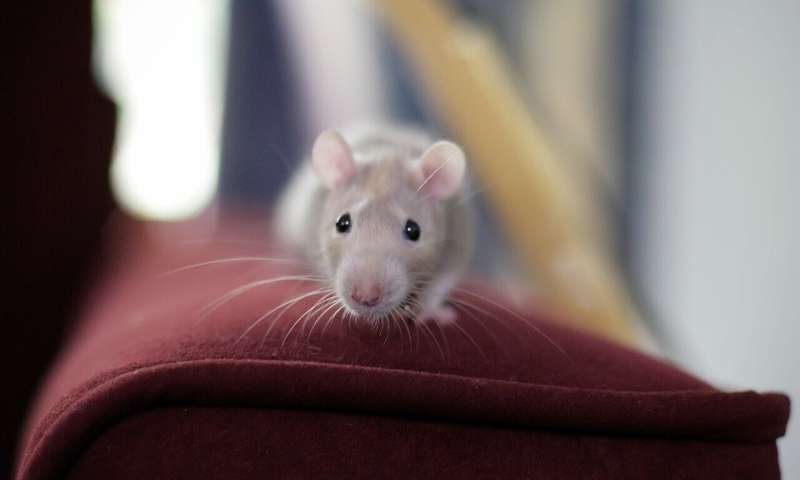Studies in mice give clues to combatting changes in aging muscle stem cells

Our muscles start to shrink and weaken when we reach our 50s and 60s in a process called sarcopenia, but new research in mice from the University of Michigan offers new insights into why this loss may occur, and how we might begin to prevent it.
Sarcopenia is the progressive loss of muscle mass in aging, and it's linked to other age-related pathologies such as osteoarthritis, cardiovascular disease and cancer, as well as an overall reduction in function and independence.
The research, led by Carlos Aguilar, a U-M assistant professor of biomedical engineering, focused on muscle stem cells since they are dedicated solely to keeping muscles healthy. And to better understand stem cell function during aging, testing was conducted on two sets of mice, one "young" and one "old," before and after muscle injury.
The results of the research, a collaborative effort from U-M, Stanford and Georgia Tech, appear in Cell Reports and reveal an interconnected picture of how muscle stem cells age.
Researchers used bioinformatics analysis to observe how older muscle stem cells lose the packaging, or chromatin, of DNA in the nucleus of stem cells. The authors observed changes in the way chromatin opened and exposed sites of DNA in aging. The changes in accessibility of chromatin rendered differences in the way DNA binding proteins (transcription factors) acted, specifically at genes that make proteins for repairing muscle injuries. The researchers discovered how one transcription factor has the ability to block the protein binding action of others.
"By silencing the activity of that one transcription factor, we were able to restore the ability of these older stem cells to fuse and build tissue again, as in youth," Aguilar said. "The opening and closing of the chromatin packaging is an elegant system stem cells use to maintain themselves, respond to injury or repair tissue.
"As that chromatin layer changes with age, the ability of stem cells to execute their functions is weakened. Our group is trying to understand and engineer this layer on top of the genome to prevent the loss of stem cells and their function, and extend their healthy lifespan."
More information: Anna Shcherbina et al. Dissecting Murine Muscle Stem Cell Aging through Regeneration Using Integrative Genomic Analysis, Cell Reports (2020). DOI: 10.1016/j.celrep.2020.107964
Journal information: Cell Reports
Provided by University of Michigan





















